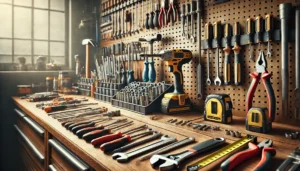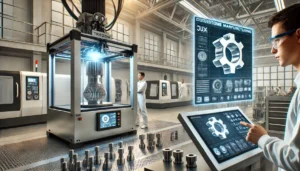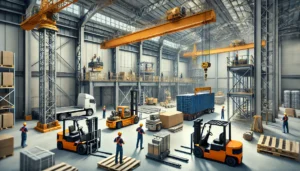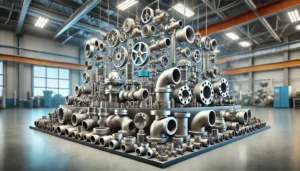Tools that promise utmost control and functioning efficiency for products are essential in today’s manufacturing and it is the modern day’s furniture, gadgets, and any piece of art we see that makes us realize that. Incorporating these tools does not just throttle the quality of the components, but also surgically enhances the efficiency of work processes, cuts back the consumption of materials, and triggers the imagination.
Understanding Precision and Accuracy
When we talk about uniformity of different measurements taken by a singular feature and how acceptable those measurements are, that is what we call precision and accuracy respectively. In fact, both of these facets are pivotal in the field of manufacturing, achieving precision includes hitting the golden mark of tolerable measurements and accuracy makes sure that the components function as intended wherever they are used. In the field of machining, precision guarantees that the parts manufactured are multiple times identical to one another. On the other hand, accuracy ensures that each piece is as close to the exact dimension as possible, working towards striking the balance aids in the birth of reliable and high caliber products.
Enhancing Measurement Capabilities
Die or tool making uses measuring devices such as micrometers, calipers, and coordinate measuring machines (CMMs) to maximize measurement accuracy. These machines can measure differences in acceptable tolerances, which allows the manufacturers to correct them. For instance, by using a CMM equipped with probes for measuring, data is acquired on the contours of objects which can later be used to check the size and configurations of intricate components. This process is critical in industries that require precision like the aerospace and automotive fields. Catching faults at this stage is highly beneficial as it saves time and prevents expensive slowdowns later on in the production.
Systemizing Process Control
The use of precision tooling allows for an exceptional quality of features in a particular design. As a result of all the automation and all the technology employed, all measurements are performed to the brand specifications, the item is manufactured within the projected time frames, and the errors and waste incurred is marginal. All of these factors assist in improving customer satisfaction. This also guarantees a high standard of products and increases the reputation and competitiveness among manufacturers in the global market.
Reducing Material Waste and Costs
Something very essential that precise tools do is to help avoid costly reworks by reducing chances of errors in part making. Careful and accurate measurements lead to attention to detail that optimizes workflows and reduces production times. In addition, motivation to continuously improve and innovate comes from the precise and manufactured intensive culture of excellence within the teams. Extensive use of precision tools in factories leads to reduced overhead expenses, faster production times, and better products.
Facilitating Complex Manufacturing Processes
Sophisticated manufacturing procedures like CNC machining depend on precision tools to effectively perform such complex and detailed structures. These machines are preprogrammed with precise tool paths, and the use of touch probes allow for best height adjustments to be made on the fly during the machining. This addition ensures complex components get made exactly in the required dimensions reducing chances of mistakes and improving the work quality. Employing these precision tools enables manufacturers to design and produce components to differentiate structures geometries or specially designed features that are not the standard.
Supporting Quality Assurance
By using light measuring devices, businesses are now able to perform strict checks on parts and assemblies during the phases of production. Quality control measures utilizing CMMs and laser scanners check every part created and ensure that it is as close as possible to the design models to pick up on any differences. This way only the parts of the required standard are passed forward in the line of production or to the customer. In this way, product quality and reliability are greatly ensured. Moreover, using light measuring devices makes the speed and accuracy of quality checks much higher, while also lowering the chances of human error, which rids the streamlining of the manufacturing process of added hassle.
Fostering Innovation
The capabilities of precision tools are not limited to traditional manufacturing, they also extend to areas such as mesoscale manufacturing which entails the utilization of components that range in size from 0.1mm to 5mm. This type of technology paves way for innovation in sectors such as electronics, biotechnology, and medicine where there is now a high demand for the precise and smaller components. Without advanced primary precision tools, the manufacturing of the minute components would be impossible. Besides these, the adoption of precision tools allow industries to practice sustainable measures by cutting down on material waste and energy output during the manufacturing process.
Conclusion
The use of drive tools in manufacturing is crucial for precision, skillful process management, conservation of materials, and innovation. The advancement of manufacturing technology will always necessitate these tools, emphasizing their role in achieving high standard outputs in the industry. Such tools, however, are more than products themselves, they are components of methods and systems. These manufacturers are investing in technology that enables them to remain competitive globally while maintaining sustainable business practices. In conjunction with changes in the tools of manufacturing, there is the promise that the field will be able to achieve much more than is possible currently.










